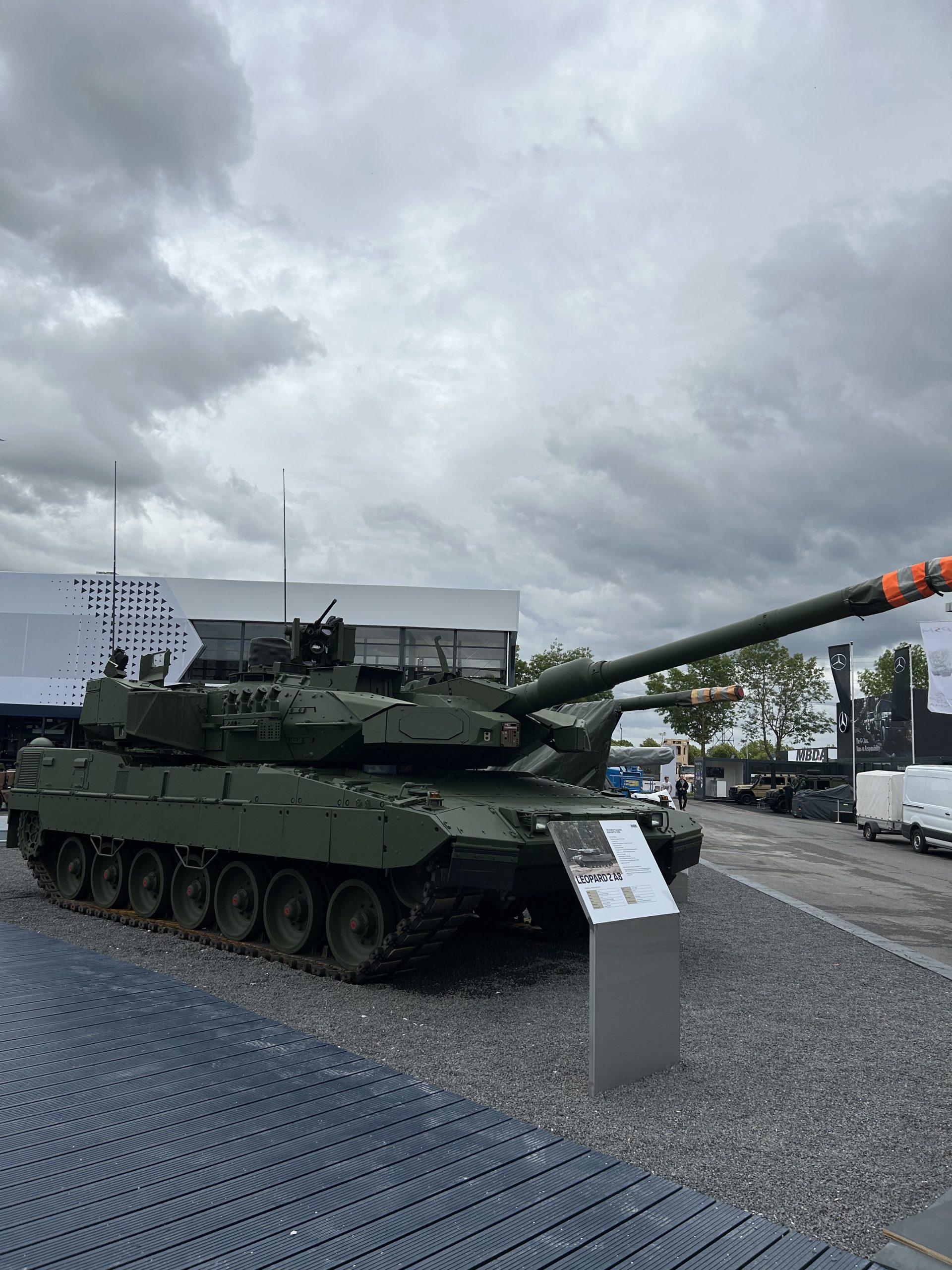Lithuania goes firm on Leopard 2 and CV90 combo for its armoured forces
Lithuania has confirmed its decision to procure Leopard 2 main battle tanks from Germany and has also gone firm on plans to procure the CV90 for its heavy division that was announced in January, according to an announcement from the Lithuanian Ministry of National Defence (MND) on 22nd of October.
Lithuania established a heavy capabilities division under law in January 2024 at the same time as initiating procurement of Leopard 2s. “We have received the information provided by Germany regarding the preliminary cost of the tank project and a final decision has been made to purchase the German Leopard 2 tanks. It is planned to sign a contract on the creation of tank battalions in the near future”, said Minister of National Defence L. Kasčiūnas. It is expected that the country’s King Mindaugas Hussar Battalion battalion will be converted to a tank battalion bearing the same name.
The tanks will be bought in phases allowing Lithuania to prioritise the procurement of air defence systems, the MND said. The number of tanks to be procured has not been released, however, other tank battalions may provide indicative numbers. The 414th Battalion, which is jointly staffed by German and Dutch personnel has 49 Leopard 2 tanks, a US tank company can have 14 tanks, according to the Battle Order website. This indicates that Lithuania is interested in between 40 and 50 Leopard 2s. For context, the Netherlands recently announced the procurement of 46 Leopard 2A8, the procurement has a budget of EUR1 – 2.5 billion, which provides an indicative cost.

The Leopard 2s will operate alongside a fleet of CV90s. Lithuania will join a growing club of CV90 operators and benefit from the shared experience of the platform. Credit: Dutch MoD.
In the same meeting that led to the Leopard 2 decision, Lithuania’s government also received a briefing and advice from the commander of the armed forces, General R. Vaikšnoras, as well as the Minister of National Defence who presented economic, industrial, and political reasons for the selection of the CV90 infantry fighting vehicle. Two battalions of the vehicles will be procured to equip the country’s heavy division, which is expected to be stood up by 2030. Again, numbers for the CV90 buy were not provided, however, Denmark’s procurement of 115 CV9035 Mk IIICs in August had a cost of EUR1.3 billion. Lithuania may require between 80 and 100 CV90s for its two battalions, which indicates a similar cost once more.
This announcement is the latest in a spate of procurements from Lithuania. The country is clearly concerned about the potential for conflict with Russia and taking steps to prepare. In September, the MND announced that it had received Sentry anti-tank mines from Forcit Defence, a Finnish company under a EUR5.9 million contract. The country has signed an agreement with neighbour Estonia to jointly attend to counter-mobility measures along their border with Russia and Lithuania anticipates spending up to EUR600 million in the next 10 years for its own needs.
The country has also procured additional Boxer wheeled armoured vehicles, which are known in Lithuanian service as the Vilkas. An additional 27 vehicles were procured to add to the 89 already in service with the country’s Iron Wolf Brigade, according to a 15th October announcement. This procurement will cost an additional EUR370 million and is anticipated to be delivered between 2027 and 2030.
Lithuania’s procurements do not stop there, it has also arranged a deal with Saab to add the Mobile Short Range Air Defence System to its capabilities, likely mounted on a JLTV. It is stated to have a maximum firing range of 9 km, with a detection range of 75 km using radar although the target type is not specified. The contract is valued at another EUR130 million.
In all, Lithuania is set to spend at least EUR4.5 billion on its land forces for projects that are expected to deliver by 2030. This shows the extent of the country’s modernisation and quest for security in the face of potential Russian aggression. Lithuania is expected to allocate just over 3% of its GDP to defence next year, which equates to around EUR2.5 billion. This helps to illustrate the significant expense and resolve of the country to beef up its defences.

Sign Up for Updates!
Get insider news, tips, and updates. No spam, just the good stuff!





